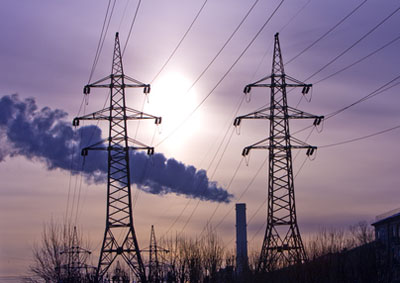12/15/2014
By Barry Cassell
Chief Analyst, GenerationHub
Electric Light and Power
The U.S. Environmental Protection Agency is proposing new regional haze SO2 reduction requirements for Texas based on a series of presumed scrubber installations and scrubber upgrades on 14 coal-fired power plant units.
The EPA will publish a notice in the Dec. 16 Federal Register that proposes to approve some aspects of a state implementation plan (SIP) for Texas, and to disapprove other aspects, according to GenerationHub. This covers the regional haze SIP that Texas submitted to EPA in March 2009 to meet the requirements of Section 308 of the Regional Haze Rule.
"We take very seriously a decision to propose disapproval of provisions in Texas’ plan, as we believe that it is preferable that all emission control requirements needed to protect visibility be implemented through the Texas SIP," EPA said. "However, in order to approve the state’s plan, we must be able to find that the state’s plan is consistent with the requirements of the CAA."

EPA’s proposed actions are summarized as:
- Best available retrofit technology (BART): It proposes to approve Texas’ determination of which sources in the state are BART eligible. It also proposes to approve Texas’ determination that none of the state’s BART-eligible non-electricity generating units (EGUs) are subject to the BART requirements because they are not reasonably anticipated to cause or contribute to visibility impairment in any Class I areas.
- Reasonable Progress Goals: EPA proposes to disapprove Texas’ reasonable progress coals (RPGs) for 2018 on the 20-percent least impaired and 20-percent most impaired days for the Big Bend and Guadalupe Mountains Class I areas.
- Calculations of Baseline and Natural Visibility Conditions: EPA proposes to approve Texas’ calculation of baseline visibility conditions at the Big Bend and Guadalupe Mountains Class I areas. It proposes to disapprove Texas’ calculation of natural visibility conditions at these Class I areas.
- Long-Term Strategy: EPA proposes to disapprove Texas’ long-term strategy because it does not sufficiently address regional haze visibility impairment for all Class I areas impacted by Texas sources. It also proposes to find that the technical basis on which Texas relied to determine its apportionment of emission reduction obligations necessary for achieving reasonable progress in Wichita Mountains was inadequate la maca viagra naturel. It also proposed to find that Texas did not adequately consider the emissions limitations and schedules for compliance needed to achieve reasonable progress in Big Bend, Guadalupe Mountains, or Wichita Mountains.
- Monitoring Strategy: EPA proposes to approve Texas’ monitoring strategy.
To remedy these deficiencies, EPA proposes a federal implementation plan (FIP) for Texas that consists of a long-term strategy with SO2 emission limits for fifteen coal-fired EGUs that impact visibility in multiple Class I areas. It proposes that these SO2 emission limits met on a 30-boiler-operating-day rolling average:
Scrubber Upgrades
- Sandow Unit 4, 0.20 lbs/mmBtu of SO2
- Martin Lake Unit 1, 0.12
- Martin Lake Unit 2, 0.12
- Martin Lake Unit 3, 0.11
- Monticello Unit 3, 0.06
- Limestone Unit 2, 0.08
- Limestone Unit 1, 0.08
- San Miguel, 0.60
Scrubber Retrofits
- Big Brown Unit 1, 0.04
- Big Brown Unit 2, 0.04
- Monticello Unit 1, 0.04
- Monticello Unit 2, 0.04
- Coleto Creek Unit 1, 0.04
- Tolk Unit 172B, 0.06
- Tolk Unit 171B, 0.06
EPA said it does not anticipate that San Miguel will have to install any additional control in order to comply with this emission limit.
"We propose to find that these emission limits will result in emission reductions that will achieve reasonable progress at Big Bend, the Guadalupe Mountains, and the Wichita Mountains," said EPA. "These emission limits reflect the degree of emission reduction that can be achieved by seven SO2 scrubber retrofits and seven SO2 scrubber upgrades, but we do not prescribe how the facilities must meet these emission limits. We determined that these emission limits are necessary to achieve reasonable progress based on our four-factor analysis, which demonstrates that the underlying controls are cost-effective and result in significant visibility improvement.
"We propose that those sources whose proposed emission limits can be achieved by installing scrubber retrofits must comply with the emission limits within five years of the effective date of our final rule. We propose that those sources whose emission limits can be achieved by conducting scrubber upgrades must comply with the emission limits within three years of the effective date of our final rule, except for San Miguel, for which we propose compliance within one year because that unit has been recently meeting our proposed emission limit."
EPA’s arguments about use of scrubbers used Big Brown Unit 1 as an example. The Texas Commission on Environmental Quality’s (TCEQ) cost-effectiveness calculation for post-combustion controls on Big Brown Unit 1 was based on reducing a projected 2018 SO2 emission level of 23,142 tons per year (tpy) by 90 percent, resulting in a reduction of 20,828 tpy. This results in a cost of $32,766,310/yr, or a cost-effectiveness calculation of $1,573/ton. "However, the installation of a scrubber would allow Big Brown flexibility in fuel choice thus allowing the unit to continue to burn the higher average sulfur fuel it currently burns, instead of moving to the low sulfur coal predicted by [the integrated planning model] IPM," EPA noted.
Comments on this proposal must be received on or before Feb. 17, 2015.
This document contains copyrighted material whose use has not been specifically authorized by the copyright owner. SEED Coalition is making this article available in our efforts to advance understanding of ecological sustainability, human rights, economic democracy and social justice issues. We believe that this constitutes a "fair use" of the copyrighted material as provided for in section 107 of the US Copyright Law. If you wish to use this copyrighted material for purposes of your own that go beyond "fair use", you must obtain permission from the copyright owner.